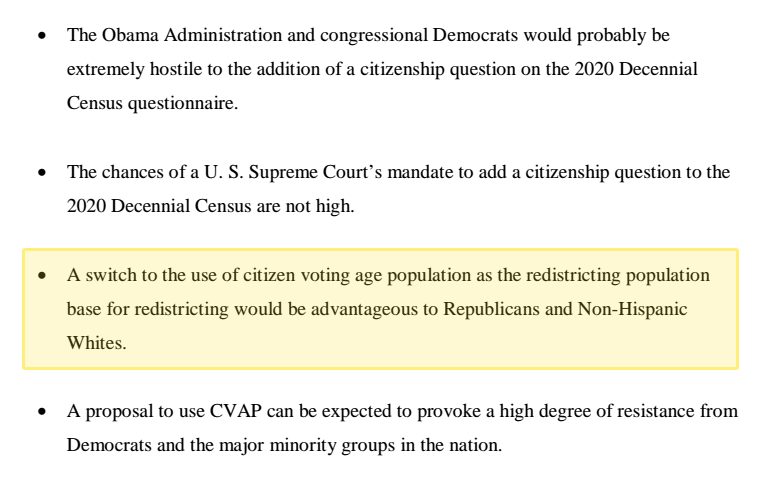Don't forget: after this election comes redistricting — and we may soon see a radically different way of redrawing state legislative districts in Missouri that doesn't take into account children, noncitizens and other residents who are not eligible to vote https://www.npr.org/2020/11/06/931908064/a-national-fight-over-who-is-counted-in-voting-districts-may-arise-from-missouri
2. Presidential elections come around every four years, but the consequences of redistricting are locked in for a decade.
We are talking about lines and maps that determine how much political representation each person living in the U.S. gets for the next 10 years.
We are talking about lines and maps that determine how much political representation each person living in the U.S. gets for the next 10 years.
3. In general, political mapmakers around the country have long drawn state legislative districts based on the total number of people living in an area as determined by the census.
It's an open question whether it's legal to redraw districts based on only eligible voters.
It's an open question whether it's legal to redraw districts based on only eligible voters.
4. The Supreme Court left that an open question in 2016. The makeup of the court has certainly changed since then.
"That open question could be one of the big fights of this decade," @mcpli of @BrennanCenter told me.
From #SCOTUS in Evenwel v. Abbott:
https://supreme.justia.com/cases/federal/us/578/14-940/#tab-opinion-3553740
"That open question could be one of the big fights of this decade," @mcpli of @BrennanCenter told me.
From #SCOTUS in Evenwel v. Abbott:
https://supreme.justia.com/cases/federal/us/578/14-940/#tab-opinion-3553740
5. GOP strategist Thomas Hofeller pushed for redistricting based on eligible voters bc it "would be advantageous to Republicans & Non-Hispanic Whites." We learned this through the legal fight over Trump admin's failed push for a census citizenship question
https://apps.npr.org/documents/document.html?id=6077735-May-30-2019-Exhibit#document/p55/a504021
https://apps.npr.org/documents/document.html?id=6077735-May-30-2019-Exhibit#document/p55/a504021
6. The Trump admin didn't get a citizenship question on the #2020Census, but it's been pushing ahead with using government records to produce the block-level citizenship data states would need to redistrict based on the numbers of eligible voters. https://www.npr.org/2020/05/20/855062093/to-figure-out-whos-a-citizen-trump-administration-is-using-these-records
7. Meanwhile, there is an ongoing legal fight over who is counted in the numbers used to redraw congressional districts. The 14th Amendment requires the "whole number of persons in each state," but President Trump wants to exclude unauthorized immigrants https://www.npr.org/2020/10/22/919063603/2nd-court-blocks-trumps-push-to-alter-census-ahead-of-supreme-court-review

 Read on Twitter
Read on Twitter



